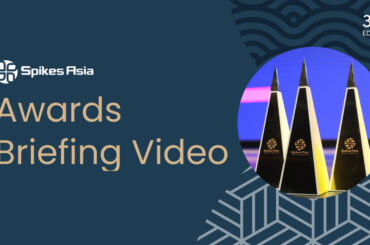Attracting visitors on social media sites involves using the right bait — linkbait. Compelling content is best. Added benefit: it appeals to bloggers too. Do it right and they’ll link to you, enhancing the prominence of your brand and driving traffic to your site. This session explains linkbaiting and provides examples and ideas to help you craft your own bait.
Moderator: Danny Sullivan, Editor-in-Chief, Search Engine Land
Speakers:
Brent Csutoras, Online Marketing Specialist, BrentCsutoras.com
Rebecca Kelley, Search Marketing Consultant, SEOmoz
Cameron Olthuis, CEO, Factive Media

Danny Sullivan introduces Rebecca Kelley of SEOmoz who gets started on linkbaiting. According to Rebecca Linkbaiting creates a Domino effect which means that:
- You receive a ton of incoming links
- Makes Google see your page faster
- Traffic stickiness- Initially traffic may spiral up and down, but after a while it shows an overall increase.
- A single page can beef up your entire domain.
The question you should be asking is what you are targeting/aiming at? Well the answer in Linkerati. For eg: Bloggers, web researchers, journalists. Some of them may not use it on a daily basis but there are more chances of them linking back to you. This is because they like to share what they find online with their friends. All in all, they like to know the latest of what is happening to keep themselves on the cutting edge.
However, Rebecca states that before you begin you should do your homework and do a bit of research on your niche. Visit social networking sites and find out your worthiness i.e. how worthy your subject matter is. Focus on the ones that are friendly to to your niche. Learn from others linkbaiting campaigns. See what worked for them and what didn’t and learn from their mistakes and success stories. Accordingly, make changes and improve your site. Update yourself on current industry trends. Find out what’s popular and also find out which site considers what subjects as hot. Attach your link bait to topics that has most users. Is it possible for you to add more juice to your campaign?
Keep a check on your very own interest group. Go through popular blogs and forums and befriend people there. Why not do a Google blogsearch and then associate yourself with bloggers.

Next, Rebecca says to brainstorm. Think of all the things you find interesting and intriguing. If you do not get enough ideas, ask around-friends, family, colleagues etc. Make a note and work on them.
What would you find interesting?
Ask coworkers and friends
Write everything down
Linkbaiting can be as simple or complex as you want it to be. It could only be an image with a caption. Other options include articles, widgets etc. Its crucial to also the cons of linkbaiting. There is a difference between being brave and being a fool. Yes, controversial matter can incite a lot of opinion (meaning many users) but it all the mud-slinging can affect your brand and give it a bad reputation. Ask yourself ‘Do the ends justify the means?’ If the answer is no, you know what to do.
Look before your leap. Before your launch, contact people in your industry, involve them and do some PR wherein you can get some feedback to know whether you are doing well or headed downhill. Keep an eye on your traffic. Ensure your server is strong enough to handle all the overload, incase your campaign becomes a roaring success. Another point Rebecca stated was to take advantage of the incoming traffic and post it fresh and interesting content to keep the visitors riveted and coming back for more. Linkbaiting does not always prove to be successful. Its similar to gambling. Remember that Linkbaiting is not the final procedure but one kick-ass strategy.

Next up is Brent Csutoras an Online Marketing Specialist, BrentCsutoras.com who gave a list of successful linkbait ideas.
These are:
- Top 10 lists: Brent insists that op 10 lists are still one of the most effective tools of linkbaiting. According to Brent, he feels that Digg receives most of his focus as all the rest is equivalent to Digg front page hit. Numbers should be mixed up and they don’t always have to be 10. These lists should also include negative lists to make it fun and different for the reader.
- ‘How To’ Baits: These how to guides, foremost have to be helpful. It should be easy to read so that its easy to work. The how-to-guide should offer value and should be appealing to the eyes. Visual candy always works, so include images, video, bullets, and headings.
- Current events: Making use of current events can prove advantageous. Foremost, you have to act fast, do some research on the subject and make sure everything is accurate. Do more than copy paste, add value by giving your own flavor. Do not misspell and use only the right jargon and terms.
- Offbeat or Extreme: As risky as this may be, if you know what you are doing it can be very successful. Most of the time, clients are wary of taking such steps and this can have many pitfalls. In the end of the day, for a few more links, you do not want to harm your brand’s reputation. Remember to not violate Terms of Service with your content, no matter which social networking site you are on.
- Humor
- Tools
- Image Campaigns: Campaigns that have images are more likely to do better than campaigns without images. The picture should be integrated into a post and have great content along with it. If you submit the post URL rather than that of the image URL, there are less chances of people stealing it.
- Research: Before you begin, do research on the subject. Include RSS Feeds and set up alerts about your subject matter. Go through social networking sites and find out what works best for your interest group/community/niche.
- Title & Description: Pay attention while creating the title and description. The title you create should be simple and strong to have an impact. It should focus on what the content is all about. On the other hand, the description should express the title well. With this, even if your website does not open, all because of a good title, users might vote for you in social networking sites. Simple things like using an upper case for the initials in your title, goes a long way in grabbing attention of the reader. Also, include numerics in your description.
- Interact & Share: After posting your article, get people to vote and comment on it. Ask friends and people of your network to comment and vote your post. Based on what they say, up or down votes. On social news, try and avoid the negative feedback.
Brent’s Social Media Tips-
- Your content should be relevant to the community.
- Integrate images.
- Restrict ads. For those that come from Digg, avoid ads.
- Offer a summary to those who want to link to you.
- Proofread your content and make sure that you do not have typos or mistakes of any kind tat your competitors can highlight.
- Is it Duplicate? If the answer is yes, then avoid submitting it. On the other hand, older posts can work.
- Check What Worked Before as this can work again for you.
- Digg Effect- Check whether your server can handle high traffic as a lot of incoming traffic can bring down server.
- Be link worthy.
- Submit at the right time. Stick to weekdays and stay away from weekends, holidays and evenings.
Digg users do not like
- Poker Subjects
- Self Promotion
- Announcement Pages

Next up Is Cameron Olthius of CEO, Factive Media. According to him, Linkbaiting is content or a feature on a website that compels others to link to it from their website. The first thing that Cameron stresses on is a server that is capable of linkbaiting.
Cameron reminds us that linkbaits include:
- Information
- Controversy
- Humor
- News
- Tools: Such as calculators, widgets, quizzes and quizzes.
Linkbaiting has tonnes of benefits. It creates a potent Link Profile; boosts incoming traffic; bookmarks and provides necessary media publicity. Cameron has with him 3 case studies:
First Case Study: Drug Rehab Center
Cameron sought social news sites (he searched De.licio.us) to find out what worked previously. Even though the most popular ones were pro-drug articles and he knew they would bring in a lot of links, he did not attempt those as he knew that it would hurt the brand’s image. Finally, Cameron suggests keeping the post simple but with relevant images and lists. After you submit the story, you have to ‘seed’ the sites and promote it in social bookmarking sites like Stumble, Digg, De.licio.us, Sphinn, etc. Ensure it is a popular account. It would also benefit if you made a power account as these come with many friends and have lots of people who are very absorbed by these. Correct category and tags are really important. In the end, always have good titles and descriptions and post them in relevant sites.
Second Case Study: Search Engine Smackdown
His second example is a game called “Search Engine Smackdown.†this looked at those who were present at the game, and it would be easier to link to those who were all part of it. Apparently, due to this technique, it gathered around 859 links at 2-3 bucks apiece.
Third Case Study: LifeInsurance.com
For this, he wrote content on something called 19 things you didn’t know about Death(Very clever). This garnered more than a 1000 Diggs and is the 4th ranking post for life insurance.
Fourth Case Study: Laptop batteries
For this, Cameron wrote a post called 20 tips to get more juice from your laptop battery. This one brought in 913 Diggs and 631 links.
IMAGE SOURCE: Dana Larson




